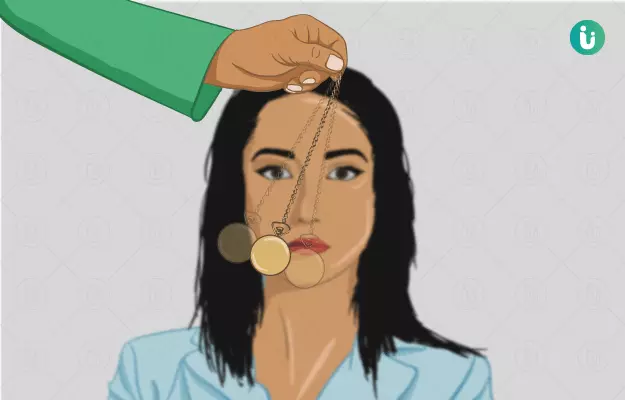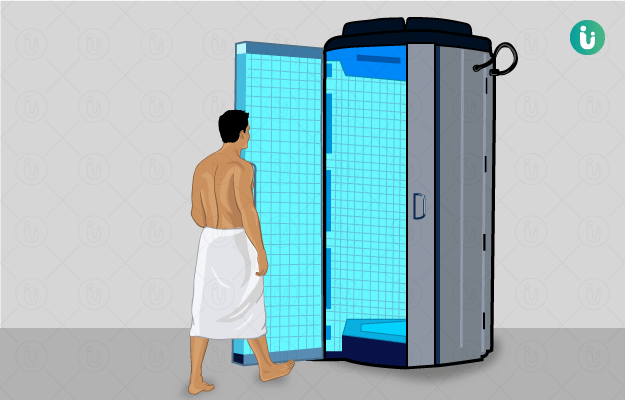Hypnotherapy, hypnotic suggestion or simply hypnosis is a form of alternative medicine that places the patient in a trance-like state of heightened focus, attention and suggestibility to provide them with positive suggestions and guided imagery in order to realise and actuate various desired outcomes. The main aim of hypnotherapy is to help the patient attain self-awareness and make decisions from a place of mindfulness. A key component of hypnotic suggestion is to help calm the patient and ease them into a state of relaxation, free from worry, stress or anxiety, where they feel liberated to speak their mind and share their true feelings. In such a state, the individual is more receptive to positive suggestions made by the therapist and this allows for alteration of problematic behaviours or thoughts and correction of harmful habits. Hypnotherapy works best in conjunction with cognitive behavioural therapy, a type of psychotherapy (talk therapy or counselling) where problematic or negative thoughts, notions, and behaviours are identified and replaced with positive ones. While hypnotic suggestion is a useful and effective non-invasive and non-drug-based therapy, it may not work on all patients and is always used as a complementary therapy modality.
- Types of hypnotherapy
- Indications for hypnotherapy
- Procedure of hypnotherapy
- Contraindications for hypnotherapy
- Complications of hypnotherapy
Types of hypnotherapy
Depending on the goal, various types of hypnotic techniques exist. Although the terms are often used interchangeably, their functions somewhat differ. Hypnosis used in modern-day medicine includes:
- Medical hypnosis: This form of hypnosis aims at alleviating symptoms of a disease or condition by placing the patient in a trance. It does not focus on rebuilding old habits. Examples of medical hypnosis are:
- Bodily symptom relief by a reduction in perception of severity. For example, relieving pain, nausea, vomiting or even hot flashes of menopause.
- Reduction of mental stress during medical treatment by placing the patient in a tranquil trance.
- Hypnosis can promote the correction of body chemical levels and function in some cases. An example is the impact on serum leptin, adiponectin and irisin levels following hypnotherapy for weight loss.
- Medical hypnosis has an impact on body function and blood chemical levels, thereby facilitating better healing as well.
If you are tired of dieting and exercising and are not able to lose weight, then use myUpchar Ayurveda Medarodh Fat Burner Capsule, it has no side effects, order it today and avail the benefits.
- Hypnotic communication: In this type of hypnosis, the practitioner communicates with the patient without inducing a trance. Examples of hypnotic communication include:
- Waking suggestions: Positive suggestions are made without placing the patient in a trance. These suggestions are usually made as part of effective doctor-patient communication and an example could even be routine medical history taking in the clinical setting.
- Positive suggestions made with the patient under general anaesthesia (GA): The soporific effect of general anaesthesia replaces the state of trance and positive suggestions are made by the therapist or healthcare practitioner.
- Using findings made from hypnotherapy to improve doctor-patient communication.
- Hypnotherapy: Psychotherapy carried out after placing the patient in a trance through hypnosis. The patient is guided into a state of heightened attention and focus and is more receptive to suggestions and guided imagery. Applications of hypnotherapy (psychotherapy under hypnosis) are:
- Improving the patient’s ability to handle their own problems by guiding them to a place of self-awareness and mindfulness.
- Bringing about behaviour change with carefully worded positive suggestions.
- Reintegration of non-accessible and dissociated emotions suppressed by the patient.
- Restructuring of a traumatic or emotionally stressful event or sensations.
- Restructuring of thought processes and patterns by minimization, reinforcement or new conditioning.
Indications for hypnotherapy
The use of medical hypnotherapy has been tried in various conditions and circumstances; however, presently it is commonly used in clinical practice as add-on therapy in only a few scenarios. Common uses of medical hypnotherapy include, but may not be limited to:
- Treatment of psychiatric conditions: The very premise of medical hypnosis is to allow the patient to enter a peaceful trance to attain self-awareness and adopt positive suggestions to combat negative emotions or handle their feelings better. Hypnotherapy is used to manage the following mental health problems:
- Deaddiction therapy: As hypnotherapy is a powerful and useful tool for behaviour modification and the adoption of more positive habits, its application in detoxification medicine is natural.
- Smoking cessation: While medical therapy with nicotine patches and gum, along with psychotherapy, is the first line for smoking cessation treatment, hypnotherapy has also been used widely for the purpose and shown positive results.
- Pain control: By easing the patient into a mental state of calm and tranquillity, positive suggestions can be made to reduce the perception of pain. While not a replacement of standard analgesia or anaesthesia, hypnotic suggestion is a non-invasive method with minimal side effects that awards modest results and can be used as an alternative or add-on therapy. Some conditions for which hypnotherapy has been used as pain relief include:
- Burns
- Cancer pain
- Childbirth or labour pains
- Irritable bowel syndrome
- Fibromyalgia
- Temporomandibular joint problems
- Dental procedures
- Headaches
- Behavioural changes: Benefiting on the property to attain a state of mindfulness and adopt healthy lifestyle changes through positive suggestions, behaviour change therapy is carried out with hypnotic suggestion. Some applications of hypnotherapy in this arena that are commonly deployed include:
- Overeating and associated obesity problems
- Bedwetting and enuresis
- Bruxism (teeth grinding or clenching)
- Management of cancer treatment side effects: Utilising hypnotherapy, positive suggestions can influence the perceived severity of cancer treatment-related pain, nausea, vomiting and other side effects. Hypnotic suggestion is only used as an add-on therapy and medications are generally needed to control the side effects.
- Hot flashes: Most women undergoing menopause (cessation of menstrual periods for more than a year, generally after or around the age of fifty) experience vasomotor symptoms like facial flushing, hot flashes, night sweats, palpitations, etc. The mainstay of treatment is hormone replacement therapy instituted to replace the deplenishing estrogen. However, in cases where treatment with hormones is unsuitable or symptoms are not fully relieved, hypnotherapy can be used as an additional treatment modality to reduce the perception of symptoms.
Procedure of hypnotherapy
Upon choosing to undergo hypnotherapy or on a doctor’s prescription, a suitable therapist trained in hypnosis must be consulted by the patient. A licensed therapist trained in hypnotherapy with due accreditation is a must. An opinion must be taken from the treating doctor or psychiatrist before proceeding with any hypnosis treatment. Some medical practitioners like doctors, dentists, family therapists, marital therapists, nurse practitioners and social workers also include components of hypnosis in their medical practice.
Before the procedure: Although no special preparation is required before a hypnotherapy session, certain measures can help the patient relax and concentrate more and get the most out of treatment. Some such measures and tips include:
- Wearing comfortable, breathable and non-restrictive clothing helps the patient relax better.
- A normal diet and adequate hydration would ensure maximum comfort in the session.
- It is important to be well-rested so as to not fall asleep in the soporific relaxing state of hypnotic trance.
During the procedure: A medical hypnosis session lasts anywhere between twenty to fifty minutes. The hypnosis therapist begins by verifying the indication for hypnotherapy, assuaging and correcting the patient’s false anxiety or incorrect notions about hypnotherapy, defining the goals to be achieved in the session and finally explaining the process to the patient. Medical hypnosis is carried out in the following phases by the therapist:
- Induction: The hypnotherapist hypnotises the patient by using various relaxing techniques, helping them achieve a trance state with attuned focus, heightened attention, calmness and increased suggestibility. The patient is aware and conscious throughout the process. The body becomes more relaxed and the mind more open and responsive to suggestions and inputs.
- Consolidation: After the trance has been induced successfully, the therapist further helps guide the patient into a deeper state of concentration. This helps the patient reach a place of mindfulness and self-awareness from where they can act in a manner conducive to the set goals.
- Therapeutic suggestions: Positive suggestions are made by the therapist to help guide the patient towards the directive goals set at the beginning of the session by the patient and the practitioner. Guided imagery is a technique that is also employed for this purpose, which makes the patient visualise vivid mental images of themselves accomplishing their goals.
- Reorientation, posthypnotic suggestions: After instilling positive suggestions in line with the previously set goals, the therapist brings the patient slowly out of the trance. Some patients may return from their hypnotised state of relaxation on their own. Some more suggestions may be made at this point.
- Discussion: After the patient has fully returned to normal, the therapist and the patient discuss the findings and outcomes of the trance session.
- Integration into a daily routine: To sustain and reinforce the effects of hypnotherapy, it is essential to adapt it into the patient’s daily life. This can be done by using an audio file at home to induce a trance; behavioural exercises (like exposure training) or even the learning of self-hypnosis techniques by the patient.
After the procedure: Patients can feel dizzy and light-headed after returning from their hypnotised trance. The hypnotherapist reviews the findings and outcomes of the session, suggests exercises to try at home (which can even include the use of self-hypnosis techniques) and discusses when the next session should ideally be held. Sometimes an audio recording of the session can be provided to the patients if they are apprehensive about not remembering their utterances and experiences in the trance state.
Hypnotherapy is generally an add-on treatment carried out along with other medical modalities and awards modest to highly effective improvement. However, it may not be effective in individuals who are unable to concentrate, as it would be difficult to induce a trance in them.
(Read more: Yoga for mental health)
Contraindications for hypnotherapy
The presence of some factors or circumstances in an individual’s case can make it necessary to assess and review the suitability of hypnotic technique use. In some cases, these factors can make the role of hypnosis techniques in treatment impossible. Some contraindications to hypnotic suggestions include:
- Patient’s inability to maintain concentration for long enough to be induced into, or maintain, a trance state.
- Schizophrenia
- Psychosis
- Hallucinations
- Delusions
- Pathological personalities
- Alcohol or drug psychosis
- Senility
- Epilepsy and narcolepsy
- Bipolar disorders
- Suicidal tendencies
- Serious heart conditions
Complications of hypnotherapy
The rate of adverse events following hypnosis, or medical hypnotherapy, has been reported as negligible. However, as with all forms of therapy, some risks are involved and it may not be suitable for patients suffering from severe mental health illnesses.
Some possible complications arising with hypnotic suggestions or hypnotherapy that are transient and resolve spontaneously include:
- Headache
- Drowsiness
- Dizziness
- Anxiety or distress
Some complications associated with hypnotherapy are unique to the treatment, more serious and complex. These side effects include:
- Confabulations: The creation of “false memories” is a risk unique to behaviour change therapies like hypnosis or cognitive behavioural therapy (CBT). The therapist’s own ideas and thoughts may be adopted by the patient as their own while under the trance-like state of attuned focus, concentration and suggestibility.
- Worsening of symptoms: Individuals suffering from more serious mental health conditions are not suitable candidates for hypnotherapy. This is especially true for those suffering from hallucinations, delusions or other forms of psychosis.
(Read more: Mental Health)












